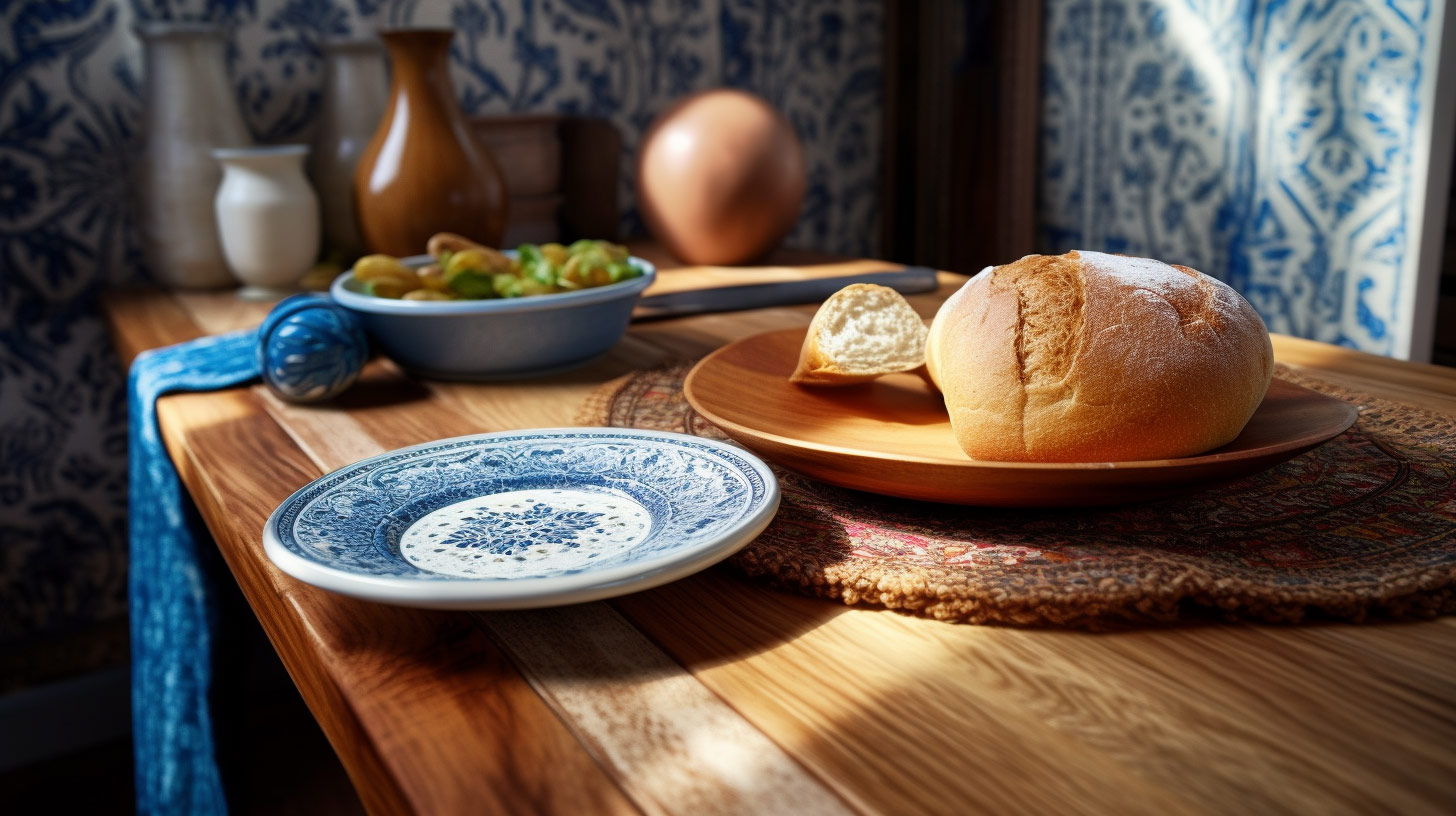When it comes to our diet, it’s essential to be mindful of the calorie content of the foods we consume. Calories play a crucial role in our energy balance and weight management. In this article, we will delve into the caloric content of two staple foods in many cuisines: bread and rice. By examining their nutritional profiles, we can make informed choices about our dietary intake.
Understanding Calories and Their Impact on Health:
Before we compare the caloric content of bread and rice, let’s briefly understand what calories are. A calorie is a unit of measurement used to quantify energy derived from food and beverages. Our bodies require a certain number of calories to function optimally. Consuming more calories than we burn can lead to weight gain, while a calorie deficit can result in weight loss.
Exploring the Caloric Content of Bread:
Bread is a dietary staple enjoyed in various forms worldwide. The caloric content of bread can vary depending on its ingredients, such as flour type, added fats, and sweeteners. On average, a slice of commercially prepared white bread contains approximately 70-80 calories. Whole wheat bread, which is often considered a healthier option, may have a similar calorie count.
You can also read this article : Eating Bread or Rice in Our Diet: Which One is Better?
Unraveling the Caloric Content of Rice:
Rice is another widely consumed food, especially in Asian and Latin American cuisines. The caloric content of rice, like bread, can vary based on factors such as the type of rice and cooking method. Generally, a cup of cooked white rice contains around 200-240 calories, while an equivalent serving of cooked brown rice has roughly 190-220 calories. Keep in mind that these values are approximate and can vary depending on specific brands or cooking variations.
Factors Affecting Caloric Value in Bread and Rice:
Several factors can influence the caloric value of bread and rice. For bread, the type of flour used plays a significant role. Refined white flour tends to be higher in calories compared to whole grain flours. Additionally, the presence of added fats and sweeteners in certain bread recipes can increase their calorie content.
Regarding rice, the type of rice itself affects its caloric value. Brown rice, which retains its bran and germ layers, contains more fiber and nutrients compared to white rice, making it a slightly lower-calorie option. Cooking methods can also impact the caloric content of rice. Boiling rice in excess water and then draining it can reduce its calorie count.
Which one is easier to digest?
When comparing the digestibility of bread and rice, it’s important to consider a few factors. Both bread and rice can be easily digested by most individuals, but there are slight differences to keep in mind.
Bread: The digestibility of bread can vary depending on its ingredients and preparation methods. Generally, white bread made from refined flour tends to be easier to digest compared to whole wheat or whole grain bread. This is because the refining process removes some of the natural fibers and nutrients present in the grain, making it softer and less demanding on the digestive system. However, individuals with gluten intolerance or wheat allergies may experience difficulty digesting bread containing gluten.
Rice: Rice is known for its relatively high digestibility. It is easily broken down in the digestive tract due to its starch composition. White rice, in particular, is more easily digestible compared to brown rice because the bran and germ layers, which contain fiber and other nutrients, have been removed during the milling process. Brown rice, while slightly higher in fiber and nutrients, may take slightly longer to digest due to the presence of these additional components.
In general, both bread and rice can be well-tolerated by most people. However, individual tolerance and digestive health can vary. Factors such as personal preferences, overall diet, and any underlying digestive conditions can influence how well an individual digests these foods.
It’s worth noting that if you experience digestive discomfort or have specific dietary concerns, it is advisable to consult with a healthcare professional or a registered dietitian. They can provide personalized advice based on your specific needs and help you determine the best choices for your digestion and overall well-being.
Which one keeps a person more full?
When considering the satiety factor between bread and rice, several factors come into play, including the type of bread or rice, portion size, and individual differences in metabolism and digestion. However, generally speaking, whole grain bread and brown rice tend to provide greater satiety compared to their refined counterparts.
Whole grain bread: Whole grain bread contains the entire grain, including the bran, germ, and endosperm. These components are rich in fiber, which adds bulk to the bread and slows down digestion. As a result, consuming whole grain bread can promote a longer-lasting feeling of fullness and satisfaction compared to white bread.
Brown rice: Brown rice retains the bran and germ layers, which contain fiber, nutrients, and natural oils. The presence of fiber in brown rice contributes to increased satiety. The fiber slows down the digestion process, allowing for a more gradual release of glucose into the bloodstream and promoting a sustained feeling of fullness.
It’s important to note that portion sizes also play a role in satiety. Consuming an appropriate portion of bread or rice, combined with other components of a balanced meal, can contribute to feeling full and satisfied.
Additionally, individual responses to different foods may vary. Factors such as personal preferences, metabolism, and overall diet can influence how well someone feels after consuming bread or rice.
To optimize satiety and promote a feeling of fullness, it’s recommended to incorporate a variety of foods in your diet, including fruits, vegetables, lean proteins, and healthy fats. These components, along with choosing whole grain bread or brown rice, can help maintain satiety levels and support overall health and well-being.
As always, it’s advisable to listen to your body’s signals of hunger and fullness and adjust your food choices accordingly. If you have specific dietary concerns or questions, consulting with a registered dietitian can provide personalized guidance based on your individual needs.
Conclusion:
Making Informed Choices for a Healthy Diet: In the battle of calories between bread and rice, it’s important to note that both can be part of a balanced diet when consumed in moderation. While bread tends to have fewer calories per serving than rice, it’s crucial to consider other factors such as nutritional value, fiber content, and the overall balance of your meals.
When opting for bread, choosing whole grain varieties can provide additional nutrients and fiber, promoting satiety and overall health. Similarly, incorporating brown rice into your diet can offer more nutritional benefits compared to white rice.
Ultimately, the caloric content of bread and rice alone should not be the sole determining factor in your food choices. Prioritize a well-rounded diet that includes a variety of nutrient-dense foods and focuses on portion control. Consulting with a registered dietitian can provide personalized guidance tailored to your specific dietary needs.
By understanding the caloric content of bread and rice and considering their impact on overall nutrition, you can make informed decisions to support a healthy lifestyle. Remember, balance and moderation are key when it comes to achieving and maintaining optimal health.
FAQ
Is whole grain bread healthier than white bread?
Yes, whole grain bread is generally considered healthier than white bread. Whole grain bread contains the entire grain, including the bran, germ, and endosperm, which provide more fiber, vitamins, minerals, and antioxidants. White bread, on the other hand, is made from refined flour, which lacks these beneficial components.
Which type of rice is better for weight loss?
Brown rice is often considered better for weight loss compared to white rice. Brown rice retains its bran and germ layers, which contain more fiber, vitamins, and minerals than white rice. The fiber content in brown rice aids in digestion, promotes satiety, and can help control appetite, making it a favorable choice for weight management.
Can bread or rice be part of a low-carb diet?
Both bread and rice are relatively high in carbohydrates, so they may not be suitable for very low-carb diets. However, there are low-carb alternatives available, such as almond flour bread or cauliflower rice, which can be incorporated into a low-carb eating plan. It’s important to consider portion sizes and the overall carbohydrate intake when including bread or rice in a low-carb diet.


2 Comments